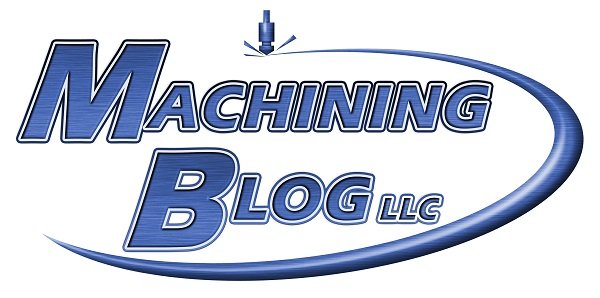Machining a Great Career Path - The Steps to Success in Manufacturing Technology
When you ask what machining means to me, I could go on for hours with stories about how I made complex parts on machines that are even more complicated than the parts themselves. Machining is by far more interesting than what most people know. From the challenges of implementing new complex equipment in the shop, to CNC programming, or even making complex parts in one setup. It is a career choice that most do not know how advanced it can be, especially the machining of today. Now, we can make parts in one setup that were once made in many setups on multiple pieces of equipment over a long-time frame. My career is a success story in manufacturing technology as I have embraced the technology of today and here is how I made it happen with six simple steps in career success.
I started my career in metalworking when I was in high school after I enrolled in the Wisconsin Youth Apprenticeship program. It is a program that is a partnership between the school, state, and industry. I learned all about machining from both high school shop classes and while working in a machine shop. It proved to be an excellent foundation for my career. The shop that I worked at turned out to be an excellent learning environment. The mentors were great, they encouraged me to go on in my career and do remarkable things.
After high school I enrolled in the Tool & Die Making Program at my local technical college. While attending school full time during the day, I worked at a tool & die shop during the night. At that time, the shop was responsible for the making of die cast dies for an American motorcycle company. After technical college graduation, I was signed on as an Apprentice Tool & Die Maker. The apprenticeship was for a term of 5 years, which equals 10,400 hours. With all the time I put in, I finished the apprenticeship in 2 years and 4 months. During my employment there, I was able to learn every aspect of the shop. From die fitting and assembly to CNC machining and CNC programming; they kept me busy. The highlight of my eight years at that tool & die shop had to be the high-speed machining that I helped implement. Imagine going from cutting on a mill at 30 to 50 inches per minute to 2,300 inches per minute with the innovative technology. After the customer base changed at that tool & die shop, I moved on to the next challenge in my career, done in one setup prototype machining.
While making prototypes, I also was busy training my co-workers. Once I trained my team in one setup machining, I went on to tackle the challenges of Swiss machining. What “Swiss” means in machining is that the machine has a sliding headstock and a guide bushing that works in- conjunction with a lathe chuck. The bar stock is clamped in the chuck, and it is fed through the A typical part for a mold made by a Tool & Die Maker, Mold Maker, or CNC Toolmaker / Machinist “It was a great experience and what was even better is a job like that in machining allows you to be all that you can be”. guide bushing. This allows the machinist to work with bar stock that is always supported, and the goal is to machine as close to the guide bushing as possible.
While taking on the challenges of Swiss machining, I worked with industry professionals in developing the software needed to process the code for the machines. Initially the programming software would not communicate with the complex machines when we would try to program the parts. It was a wonderful experience being a machinist working on program code issues with a top CAM software company and proving out the code on a very complex machine.
A career like mine is easy to get started in. You do not need a bachelor’s degree to do what I have done in manufacturing. I went to a technical college and served an apprenticeship. At the time I invested about $12,000 in education and tools of the trade. I am now well respected, and I have the knowledge to be effective in the manufacturing industry. To have a great career in manufacturing I have come up with six steps that I used to develop career success. They all are building blocks to great career accomplishments and are easily obtained by applying yourself to your career goals. You can do it to, here is how….
1. Get a Technical Degree – A solid educational foundation is a critical building block; you will make a lot more money in your career if you follow through with a Technical College education.
2. Serve a State Sponsored Apprenticeship – This is an excellent way to learn the skills of the trade and climb the pay scale also. It also will ensure that you are viewed as a professional in your career. By finishing an apprenticeship and becoming a journeyman, you will be put in a position to make a good wage for the rest of your career.
3. Never Stop Learning – Enroll in at least two specialized classes per year. It is an excellent way to build a great resume also, as it shows future employers that you are a dedicated career professional.
4. Become Proficient in Working with Others – This is the most important factor of the six steps. You will have more opportunities presented to you if you can work with everyone effectively.
5. Gain the Ability to Turn Manufacturing Issues into Career Opportunities - Some may look away from the major issues that hinder the shop. These are the challenges that build a great resume, so ask your boss how you can help fix the major issues they encounter throughout the shop.
6. Become a Certified Professional in Manufacturing – Consider this the bow on your career package. It will set you apart from the others in the industry. A certification from the Society of Manufacturing Engineers ensures that you have the knowledge to make a difference in the manufacturing industry. It also challenges you to be your best, by obtaining credits for recertification.
By following these steps, you will become a leader in the manufacturing industry. You may ask what is next in my career. I can tell you working with others on machining issues and keeping up on the latest technology, more technical classes too, the keys to success in the manufacturing industry.







